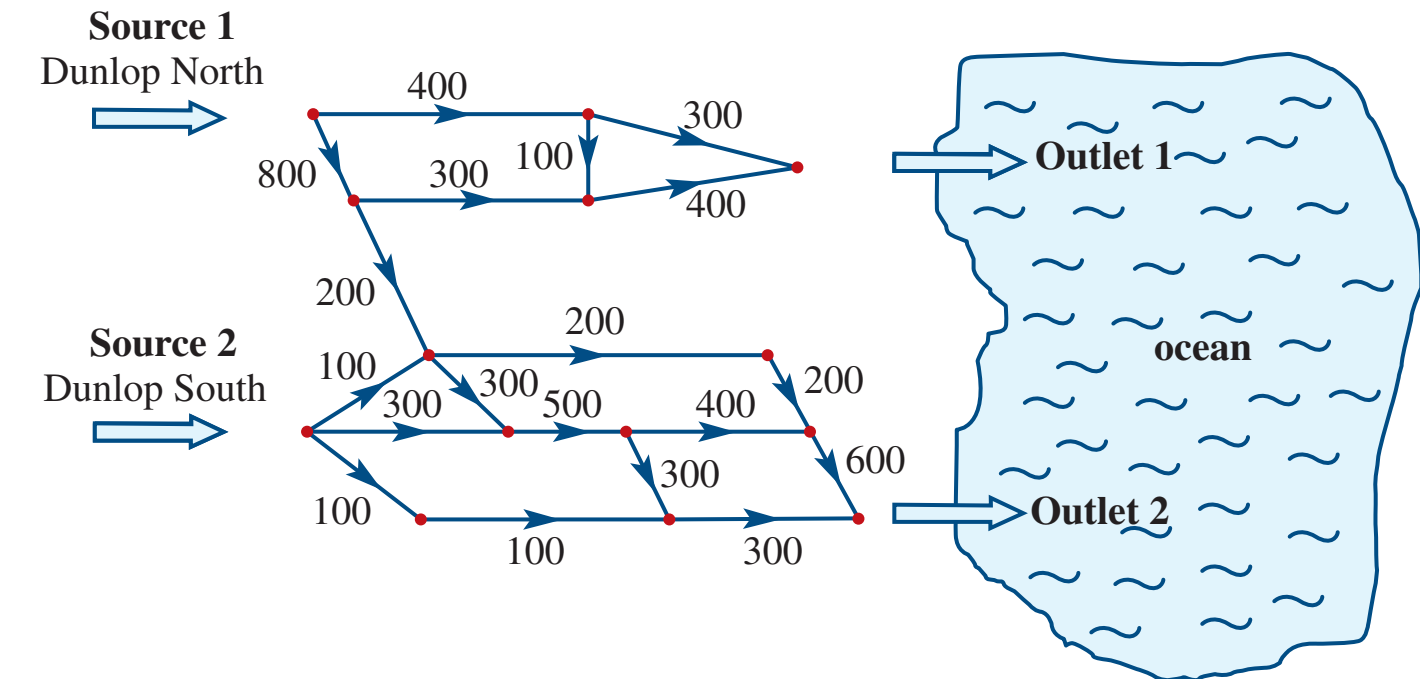Photo AI
Last Updated Sep 24, 2025
Tourism Economic Benefits Simplified Revision Notes for NSC Economics
Revision notes with simplified explanations to understand Tourism Economic Benefits quickly and effectively.
350+ students studying
Tourism Economic Benefits
Tourism significantly contributes to economic development, offering numerous advantages to various sectors and communities.
Definition of Tourism
Tourism: The act of travelling for leisure, business, or cultural exploration, which serves as a catalyst for economic benefits by enhancing local businesses and generating employment.
Tourism: Involves travel for leisure, business, or cultural exploration, leading to economic benefits such as boosting local industries and generating employment.
Tourism's Role in Economic Development
- Stimulates critical sectors: Includes transport, hospitality, and retail.
- Creates jobs and income, contributing significantly to the economic vitality of local communities.
Economic Indicators in Tourism
-
GDP Contribution:
- Tourism can contribute up to 10% or more to a nation's GDP, thereby impacting overall economic health.
-
Job Creation:
- Direct jobs:
- Examples include hotel staff, tour operators, travel guides.
- Indirect jobs:
- Examples include craftsmen, hospitality suppliers.
- Induced jobs:
- Resulting from tourism-generated income spent locally.
- Direct jobs:
-
Foreign Exchange Earnings:
- Tourism aids in acquiring foreign currency, vital for the balance of payments, reflecting a country's economic engagement. It stabilises this balance by bringing foreign revenues.

Global Tourism Benchmarks
- South Africa:
- Known for strengths in wildlife and safari experiences.
- Challenges: Development is needed in urban tourism infrastructure and marketing.
Case Study: Thailand
- Strategic Focus:
- Promoted cultural and eco-tourism.
- Invested in infrastructure enhancements and comprehensive marketing efforts.
- Outcomes:
- Significant increase in tourist arrivals and GDP from the tourism sector.
- GDP Impact: Sometimes exceeds 10% contribution to national GDP.
- Job Creation: Notable employment multiplier effects across tourism-connected sectors.
Contribution to GDP
GDP Gross Domestic Product is the total value of all goods and services produced within a country. Tourism contributes importantly, making up to 8.6% of South Africa's GDP.
Tourism Definition
Tourism: Activities involving travel and staying in destinations outside the usual environment for leisure, business, or other purposes.
- Multiplier Effect:
- Example: Each pound spent by tourists at a hotel enhances business in food, transport, and retail alike.
- Key Statistics:
- Boost to related sectors such as transport and hospitality.

Job Creation
Employment Impact:
- Tourism represents 7% of South Africa's total workforce.
- Excels in providing entry-level opportunities and youth employment.
Youth Employment Through Tourism
- Provides crucial entry-level opportunities.
- Offers pathways for skills development and career progression.
Types of Jobs:
- Direct Jobs: Involve positions such as hospitality staff and tour guides.
- Indirect Jobs: Include roles in supply industries like food service suppliers.
- Induced Jobs: Emerge from spending by tourism sector employees.

Indirect Benefits to Other Industries
- Craft:
- Tourism supports the local craft industry as tourists buy souvenirs, raising demand.
Boost to Craft Industry
- Craftspeople gain greater exposure and increased sales.
- Agriculture:
- Rising demand for local produce due to tourists staying in hotels and dining in restaurants.
Agricultural Support
- Encourages local food production to meet the demands related to tourism.
Case Study: iSimangaliso Wetland Park
- Demonstrates wider economic impact.
- Substantial job creation in surrounding communities.
- Enhances local economic activity through visitor spending.

Significance of Foreign Exchange
Foreign Exchange Earnings:
- Tourism brings foreign currency into the economy, bolstering reserves.
- Aids in balancing economic scales by providing steady currency inflow.
Macro-Economic Benefits:
- Diversifies income streams.
- Supports currency valuation and economic stabilisation.
Infrastructure and Community Development
Connection Between Tourism and Infrastructure Development
- Tourism as a Catalyst:
- Tourism promotes essential infrastructure developments like:
- Roads
- Airports
- Telecommunications
- Tourism promotes essential infrastructure developments like:
- These improvements are crucial for:
- Enhancing destination accessibility
- Boosting tourist attraction
- Example: The Garden Route in South Africa highlights how improved roads and amenities increase tourism appeal, attracting more visitors to these scenic areas.
Benefits of Infrastructure Development
-
Economic Benefits:
- Infrastructure sparks economic activity by:
- Improving transport, leading to better movement of goods.
- Enhancing communications, facilitating business operations.
- Specific Example: In Mpumalanga, better roads have led to increased market access for locals, driving economic growth.
- Statistic: Economic output rose by 30% following significant infrastructure upgrades in tourist regions.
- Infrastructure sparks economic activity by:
-
Social Benefits:
- Key connectivity enhancements lead to better access to:
- Healthcare facilities for faster medical response.
- Educational institutions enhancing student transport.
- Maps effectively illustrate these connectivity improvements.
- Key connectivity enhancements lead to better access to:
Infrastructure developments are essential for enhancing community well-being and economic growth.
Map Featuring Key Infrastructure Projects in South Africa

Infrastructure Enhancements: Roads and Public Transport
-
Road Development:
- Expansions in tourist hotspots include:
- Improved paved roads
- Development of new highways
- Example: The N2 highway expansion in the Eastern Cape significantly boosted tourism and local business by improving access.
- Expansions in tourist hotspots include:
-
Public Transport:
- Enhancements include improved bus and rail services aiding both tourism and resident travel.
- Example: The Gautrain in South Africa increases connectivity for both tourists and commuters.
- Data: Public transport usage rose by 15% following network enhancements in Gauteng.

Rural Development and Poverty Alleviation through Tourism
-
Rural Infrastructure:
- Developments in rural regions include improvements in power, water, and internet systems.
- Example: Solar energy projects in Limpopo showcase how infrastructure enhances living standards.
-
Economic Opportunities:
- Infrastructure promotes job creation by:
- Supporting tourism-based enterprises
- Encouraging local service growth
- Example: Around Kruger Park, infrastructure improvements support local job creation and entrepreneurial opportunities.
- Infrastructure promotes job creation by:

Community Empowerment Strategies via Tourism-driven Projects
- Empowerment Initiatives:
- Programmes foster local decision-making in tourism planning, promoting self-sufficiency and improving socio-economic conditions.
Example: In South Africa, the Isibindi programme successfully engages locals in tourism planning, converting visitor growth into community benefits.
- Engagement Models:
- Community-based tourism involves direct resident participation.
- Case Study: KwaZulu-Natal's community-led ecotourism provides a sustainable development model with all stakeholders involved.
Introduction to Indigenous Knowledge Systems (IKS) in Tourism
- Indigenous Knowledge Systems (IKS): Traditional knowledge and practices vital for cultural heritage promotion and preservation.
- Offer unique and authentic experiences, attracting tourists to these cultural narratives.
- Example: Indigenous performances at cultural festivals enrich cultural diversity and draw visitors.
Understanding Indigenous Knowledge Systems
-
IKS Significance:
- Preserves cultures by showcasing traditional lifestyle practices.
- Market Differentiation: Enhances destination distinctiveness.
- Tourist-Seeking Aspect: Many seek sincere experiences related to local traditions.
-
Illustrating Differentiation:
- Zulu Community: Traditional beadwork and musical arts capture tourists' interest, enhancing authentic connection experiences.
Integrating IKS into Tourism
-
Examples:
- Cultural Tours: Involve exploring indigenous practices, like visiting a Maasai village to learn about traditional cattle herding.
- Traditional Workshops: Allows visitors to engage in beading, pottery, or weaving, gaining insights into cultural significance.
-
Benefits:
- Tourists enjoy deeper satisfaction through interactive, engaging experiences.
- Economic growth supports preservation efforts.
Highlight Example: Participation in Xhosa beadwork workshops builds a tangible connection between visitors and cultural heritage.
Cultural Sites and Festivals
- Importance:
- They directly reflect cultural and historical stories.
- Key South African Examples:
- Robben Island:
- A symbol of freedom, representing perseverance and triumph.
- National Arts Festival:
- Africa's largest arts celebration, providing a platform for diverse expressions.
- Robben Island:
- Cultural Preservation: These sites and festivals play a vital role in maintaining and promoting cultural community identities.
Sustainable Practices and IKS
-
Practices:
- Eco-Friendly Lodging: Utilises local materials to reduce environmental footprints.
- Traditional Food: Encourages biodiversity and supports local agriculture.
-
Case Study:
- Bush Lodge: Incorporates Zulu architectural methods, adopting solar energy. This reduces costs by 30% annually, boosting local craftspeople's economic standing.
Community-Led Cultural Heritage Initiatives
- Initiatives:
- Empower communities, ensuring cultural integrity and authentic representation.
- Outcomes: Increased community income, richer tourist experiences, and enhanced engagement.

- Example of a successful initiative.
Policy Integration for Promoting IKS
-
Government Role:
- Supports protections, e.g., UNESCO site endorsements ensuring heritage safety.
-
Policies:
- South Africa's Heritage Resources Act: Protects indigenous lands, supporting their integration into tourism.
-
Challenges:
- Commercialisation: Risks authenticity loss.
- Preservation Issues:
- Balancing heritage retention with tourism demands.
Recommendations
- Overcoming Challenges:
- Strengthen protections for culture and heritage.
- Promote community-focused tourism models.
- Propose frameworks that align sustainable tourism with cultural traditions, ensuring long-term viability.

Visualisation of Integration Process
- Depiction: Understand how each step ensures both cultural and economic benefits.
Policies to Enhance Tourism's Economic Benefits
Introduction to Policy Recommendations
Policy Development Importance:
-
Policies are crucial for maximising South Africa's tourism-driven economic success.
-
Current Performance:
- Existing measures have an inconsistent impact on tourism benefits.
- Example: Despite global trends, tourist inflows showed stagnation recently.
-
Potential Benefit:
- Enhanced policies could substantially boost economic results.
- Bullet points showcase areas where policy improvements could augment economies, such as increased tourist service offerings.
Key Policy Focus Areas
Marketing and Branding Strategies
-
Cape Town's Success:
- Online marketing campaigns increased international awareness.
- Collaborations with prominent travel influencers expanded reach.
- Developing an international branding strategy successfully attracted diverse visitor segments.
- Success Data: 20% annual increase in international tourists over five years.
-
Economic Trend:
- Emerging markets like Asia-Pacific are being targeted.
- Special interest tourism, such as eco and cultural tours, is becoming more popular.
Infrastructure Development Policies
- Significant Projects:
- Airport expansions, such as at Cape Town International.
- Integration of public transport systems increases connectivity.
- Illustrated improvements correlate with increased tourist movements.
- Growth Data: 15% rise in airport arrivals after expansions.

Cultural Heritage Promotion
-
Government Investments:
- Extensive restoration work conducted at Robben Island.
- Investment focuses on promoting cultural heritage internationally.
-
Economic Results:
- Revenue from heritage tourism increased by 25%.
- Increased attendance at heritage sites by 30%.
Eco-Tourism and Environmental Sustainability Policies
- Economic Examples:
- Policies at Kruger National Park resulted in sustainable visitor and funding increases.
- Statistical Increase: 10% annual growth in visitors, contributing directly to conservation funding.
The protection of biodiversity is crucial for maintaining sustainable tourism growth.
- Framework:
- Illustrated eco-tourism frameworks involve stakeholder participation ensuring long-term viability.

Public-Private Partnerships (PPP)
- Successful Case Studies:
- The Table Mountain Aerial Cableway is a successful PPP, enhancing local employment.
- Compared to traditional developments, PPPs deliver improved project efficiency and local benefits.
PPPs offer substantial advantages in resource utilisation and effective management of tourism initiatives.
Community Empowerment and Benefits
-
Empowerment Success:
- Initiatives like community-led safaris increased local incomes by 20%.
- Hospitality training programmes greatly expanded employment opportunities.
-
Highlight Effective Strategies:
- Empowering locals bolsters community economies and ensures tourism longevity.
Policy Integration and Implementation Challenges
- Challenges Overview:
- Bureaucratic processes lead to inefficiencies.
- Coordination issues among government entities.
- Resource and funding limitations further constrain execution.
Engagement with stakeholders and feedback loops are essential for successful and adaptive policy development.
Importance of Integrating Sustainability into Tourism Policies
- Environmental Sustainability: Align tourism with ecological balance. Critical for both economic and environmental well-being.
- Prevents negative ecological impacts due to tourism activities.
Environmental Sustainability: Central to maintaining ecological balance while fostering tourism growth.
- Policy Considerations: Sustainable tourism policies ensure environmental and economic resilience.
- Prevents resource depletion and promotes responsible tourism.
Impacts of Eco-Tourism on Conservation and Economic Gains

- Shows how ecosystem conservation is linked to economic advantages.
- Economic and Environmental Interactions: Eco-tourism financially supports conservation and boosts local economies.
Conservation and Eco-Tourism Case Studies
- Case Study: Cape Fynbos Region:
- Successful eco-tourism integration fosters local economic development.
- Eco-conscious marketing strategies promote tourism and job creation.
- Example: 20% visitor increase due to sustainable practices.
Sustainable Tourism Practices
- Best Practices Overview:
- Waste Reduction: Encourage recycling initiatives.
- Energy Efficiency: Utilise energy-saving solutions.
- Water Conservation: Implement advanced water-conserving technologies.

- Innovation and Technology: Emphasise specific technological advancements that support sustainability.
- Example: Solar-powered hotels spearhead ecological initiatives.
Technology's Role in Promoting Sustainable Tourism
- Technological Innovations:
- Innovations such as energy-efficient infrastructure.
- Adoption of digital guidebooks decreases paper usage.

Policy Recommendations for Sustainable Tourism Development
- Policy Integration & Community Involvement:
- Implement explicit strategies to reduce carbon emissions.
- Foster community engagement to reinforce efficient, sustainable practices.
500K+ Students Use These Powerful Tools to Master Tourism Economic Benefits For their NSC Exams.
Enhance your understanding with flashcards, quizzes, and exams—designed to help you grasp key concepts, reinforce learning, and master any topic with confidence!
340 flashcards
Flashcards on Tourism Economic Benefits
Revise key concepts with interactive flashcards.
Try Economics Flashcards39 quizzes
Quizzes on Tourism Economic Benefits
Test your knowledge with fun and engaging quizzes.
Try Economics Quizzes8 questions
Exam questions on Tourism Economic Benefits
Boost your confidence with real exam questions.
Try Economics Questions2 exams created
Exam Builder on Tourism Economic Benefits
Create custom exams across topics for better practice!
Try Economics exam builder71 papers
Past Papers on Tourism Economic Benefits
Practice past papers to reinforce exam experience.
Try Economics Past PapersOther Revision Notes related to Tourism Economic Benefits you should explore
Discover More Revision Notes Related to Tourism Economic Benefits to Deepen Your Understanding and Improve Your Mastery
